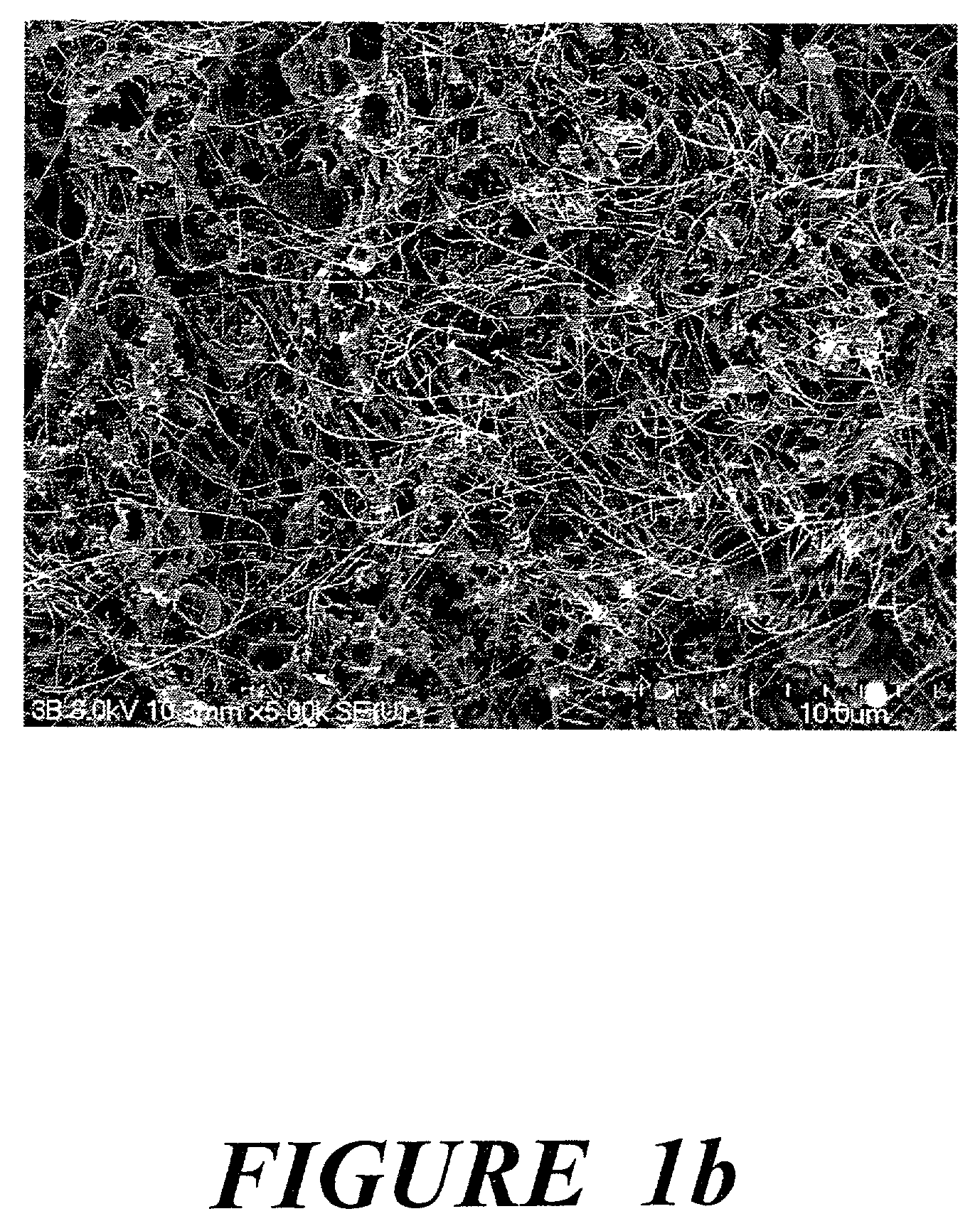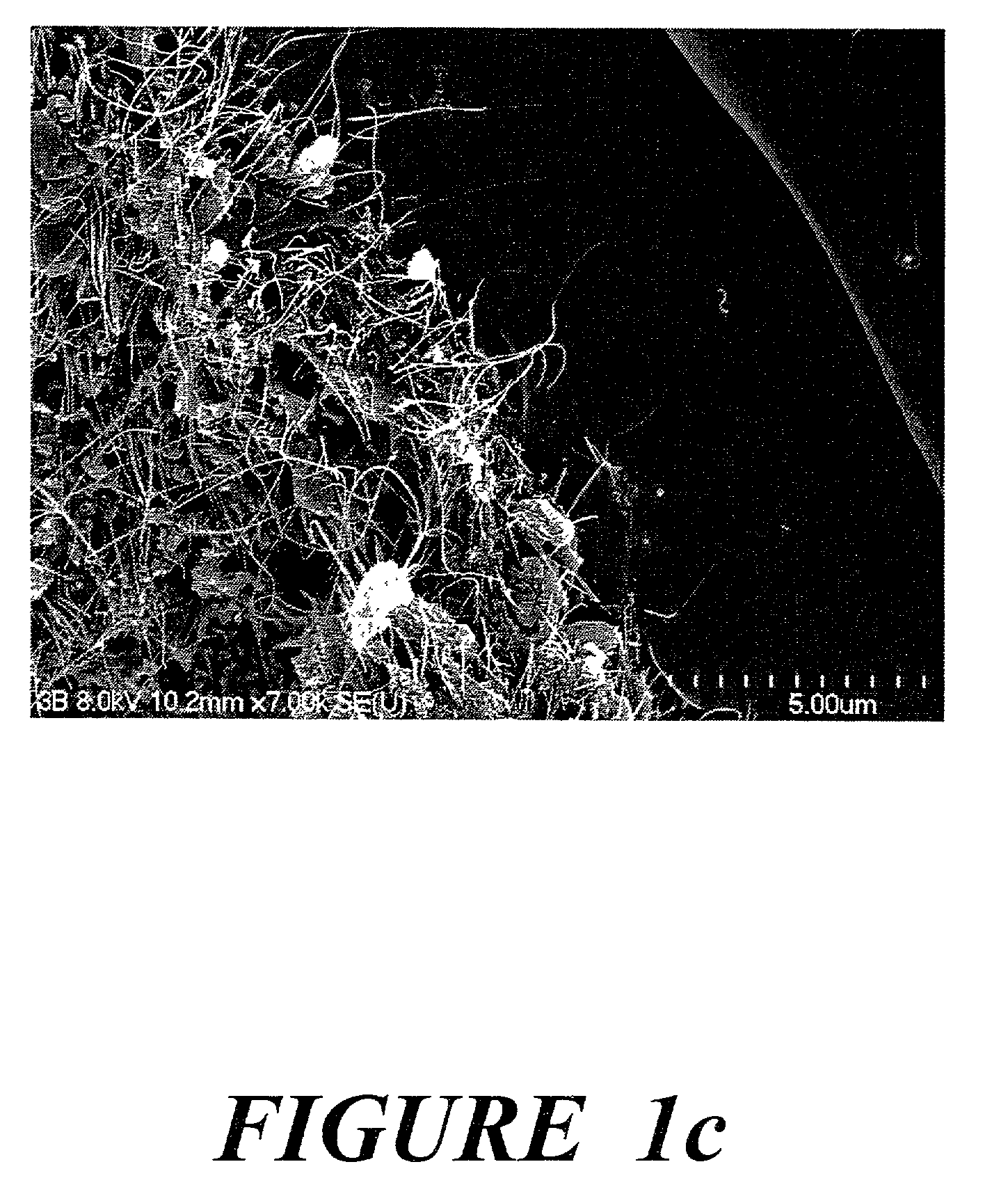Halogen containing-polymer nanocomposite compositions, methods, and products employing such compositions
a technology of polymer nanocomposites and compositions, which is applied in the directions of nanosensors, special tyres, transportation and packaging, etc., can solve the problems of incompatibility of materials with such materials, and achieve the effects of low loading levels, low cost, and flexibility
- Summary
- Abstract
- Description
- Claims
- Application Information
AI Technical Summary
Benefits of technology
Problems solved by technology
Method used
Image
Examples
examples
[0060]The host materials used in this study are a set of four fluoropolymers with different atomic percentages of fluorine. The polymers, described in some detail below, are a perfluorocyclobutyl (PFCB) aromatic polyether thermoplastic, one copolymer of PFCB, and poly(vinylidenedifluoride) (PVDF) and one copolymer of PVDF. These are compared to a limited extent with poly methylmethacrylate (PMMA).
Host Materials PFCB / PFCB-Copolymer
[0061]Perfluorocyclobutyl (PFCB) polymers used were prepared from commercially available precursors as described elsewhere. Specifically, thermoplastic PFCB polymers used in this study were prepared from 4,4′-bis(trifluorovinyloxy)biphenyl or 4,4′-bis(trifluorovinyloxyphenyl)hexafluoro-isopropylidene, or for copolymers, a trifunctional comonomer tris(trifluorovinyloxyphenyl)ethane.
[0062]Perfluorocyclobutyl (PFCB) polymers are prepared from the free radical mediated thermal cyclopolymerization of trifunctional and bifunctional aryl trifluorovinyl ether monom...
example
Halo-Polymer Compositions with Clay Materials
[0085]Nanocomposite matrix compositions may be developed using halogen-containing monomers or polymers or co-polymers as described above in connection with the Examples (or other halogen-containing monomers or polymers as disclosed in this specification) as combined with various clay materials. For example, it is possible to provide in the matrix set forth in the examples above to include a clay product, such as a hydrated aluminum silicate (as one example).
[0086]Naturally occurring clays may be used, including but not limited to kaolinite, bentonite, mica, talc, silica nanoparticles, montmorillonite, attapulgite, illite, bentonite, halloysite, fullers earth, kaolin, and polyorganosilicate graft polymers.
PUM
| Property | Measurement | Unit |
|---|---|---|
| volume resistivity | aaaaa | aaaaa |
| length scales | aaaaa | aaaaa |
| diameters | aaaaa | aaaaa |
Abstract
Description
Claims
Application Information
 Login to View More
Login to View More - R&D
- Intellectual Property
- Life Sciences
- Materials
- Tech Scout
- Unparalleled Data Quality
- Higher Quality Content
- 60% Fewer Hallucinations
Browse by: Latest US Patents, China's latest patents, Technical Efficacy Thesaurus, Application Domain, Technology Topic, Popular Technical Reports.
© 2025 PatSnap. All rights reserved.Legal|Privacy policy|Modern Slavery Act Transparency Statement|Sitemap|About US| Contact US: help@patsnap.com



